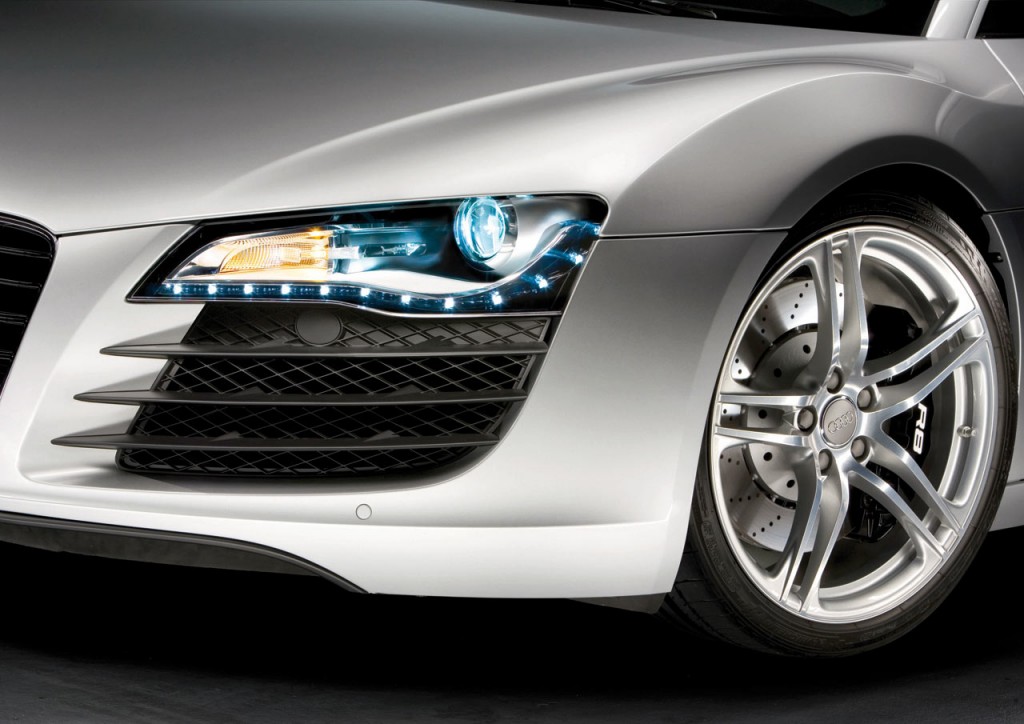Why LEDs Make Perfect Daytime Running Lights For Cars
Posted by Amit Soni on 2nd Jul 2012
 Lately, you may have noticed an increasing number of cars driving about sporting luminous "eyebrows".
Lately, you may have noticed an increasing number of cars driving about sporting luminous "eyebrows".
That’s because the European Union recently passed a directive making dedicated daytime running lights (DRLs) a mandatory requirement on all new passenger cars and small delivery vehicles approved on or after the 7 February 2011. And, from August 2012 this will be extended to all newly-built buses and trucks as well.
What Are DRLs?
DRLs are bright, forward-facing lights that are situated alongside or beneath a car's existing headlamps and they’re designed to make a vehicle more conspicuous and visible to other road users during the day.
Unlike regular headlamps, which can be switched on and off independently from the engine, DRLs come on automatically with the car's ignition and remain illuminated while the engine is running.
They can only be switched off again once the car's engine is off, or when the main headlights are engaged.
DRLs are not a recent development, however. Sweden has had mandated DRLs for over 30 years, but many other countries now also have some DRL requirements in their laws, although the precise form varies.
Indeed, Swedish automotive company Volvo has used many different arrangements for DRLs over the years. Some had separate lights on the front, or used a twin-filament lamp in the parking light position, with the brighter filament wired as the DRL.
Sometimes the law demands only that DRLs be fitted and operational on vehicles made after a certain date. For example, in Canada, DRLs were made compulsory on all new cars manufactured from 1990 onwards. Other countries have extended these laws by also demanding that anyone driving an older vehicle which does not have DRLs, does so with low-beam headlights illuminated at all times.
By 2006, twelve European countries had introduced them in one form or another, although the UK has never made it a requirement until now.
Fuel Consumption And DRLs
One of the chief bones of contention that people have with DRLs is the increase in fuel consumption they precipitate.
DRLs draw their electricity from the car’s alternator, which in turn results in a higher rate of fuel-consumption. Not only is this more costly, but it also results in the car producing more CO₂. Therefore, finding a light source that is both bright and energy-efficient is of paramount importance.
LEDs (Light-emitting diodes) consume a tiny fraction of the electricity required by regular dipped-beam headlights. A normal headlight will use about 110 watts, but DRLs using LED-based lighting technology only require 5-10 watts, thereby putting less strain on the car’s alternator, resulting in 90% less fuel-consumption and a reduction in CO₂ emissions of over 3%.
LED light bulbs also offer further advantages in that they last longer and produce a more directional light, increasing their visibility considerably when compared to typical headlights. Such is the general improvement in the life-spans of LED bulbs that they can now be expected to last in excess of 50,000 hours, which equates to 17.12 years, and even more if the car is used less frequently!
The main purpose of DRLs is to improve the visibility of vehicles to other road users. By implementing this new law, the European Commission believes that it will greatly increase road safety and reduce the number of casualties on roads all across the continent.
Once again, safe, bright and energy-efficient LEDs are showing the world that they’re miles ahead of the competition in every conceivable department!





